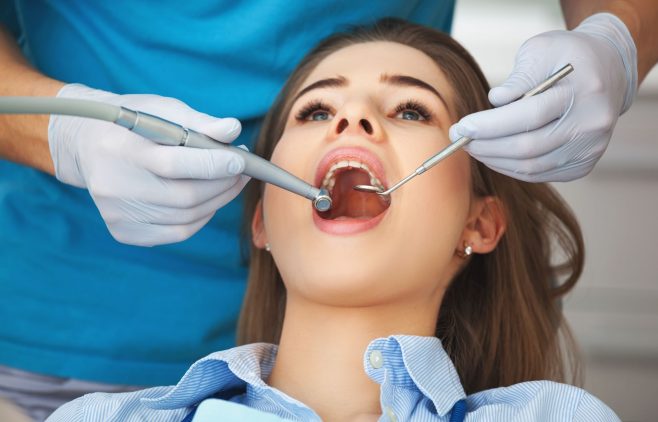How Is An Advancement In Dentistry-Related Technology Helping Patients?
Technology has always been the cornerstone in the field of dentistry. It has truly been changing dentistry and how! New advancements and inventions have resulted in lesser drills and injections, less invasive procedures, more accessibility to dental care, and lower costs. Technological advances have truly been transforming dentistry for the better.
Certain next-generation technological advancements have completely changed how dental procedures are carried out. The development of diagnostic tools that can analyse our physical condition with even greater precision and provide precise diagnoses and treatments is a significant part of this revolution that can be felt and seen. Invisalign, a kind of invisible dental aligner that has reformed the concept of braces, is one such example.
Another popular breakthrough in dentistry is dental lasers! Lasers have made highly invasive dental procedures less complicated and time-consuming.
What are Dental Lasers?
LASER stands for ‘Light Amplification by Stimulated Emission of Radiation”. The laser instrument creates light energy in a very narrow and focused beam, producing a reaction when the light hits the targeted tissue. It facilitates the removal or reshaping of the said tissue.
Hair replacement treatments, tattoo removal, eye surgeries, etc involves laser treatments. In recent years, lasers have become a commercial success in dentistry, and laser dentistry has become a popular form of dental care.
Laser dentistry provides a more efficient, comfortable, and less painful treatment option for several dental procedures than drilling and other non-laser procedures. Tooth decay, gum diseases, hypersensitivity, and teeth whitening are some of the procedures that is treated using laser dentistry.
What Are The Different Types Of Lasers In Dentistry, And What Are They Used For?
There are four types of lasers used in dentistry: the Diode laser, CO2 laser, Erbium laser, and hard and soft tissue lasers. Depending on the kind of surgery or treatment needed, laser types are selected.
– Erbium Lasers
Erbium lasers are a type of hard tissue laser. Generally, two types of erbium lasers generally used in dentistry. These lasers reduce noise and vibrations during procedures compared to traditional dental tools. They can perform a variety of functions, including the preparation of enamel and bone. In addition, these lasers eliminate the need for anesthesia since their use minimizes pain or trauma and the recovery period is relatively quick.
– CO2 Lasers
The CO2 lasers help in soft tissue removal swiftly. The upside to using a CO2 laser is that it requires minimum tissue penetration, making the procedure quick. However, the downside to using CO2 lasers is that they are quite expensive, bulky, and can sometimes cause damage to the hard tissues.
– Diode Lasers
Diode lasers are a type of soft tissue laser. These lasers function like laser pointers and are incredibly cost-effective and compact. It makes them highly attractive in the field of dentistry. Diode lasers are used for teeth whitening, impression troughing, gingivectomies, etc.
– Hard and soft tissue lasers
All lasers mentioned above can generally be categorized into hard and soft tissue dental lasers. It is used for treating patients depending on their levels of abrasiveness. E.g., Erbium lasers are hard tissue lasers because they are abrasive enough for hard tissues, whereas CO2 lasers and Diode lasers are not that abrasive and hence are categorized as soft tissue lasers.
Soft tissue dental lasers are used for the following oral health procedures:
- Gummy smile treatment: A high-powered dental laser helps remove the excess gum tissues when you have extra gums surrounding your teeth.
- Removal of soft tissue folds: Soft tissue folds or irregularities result from poorly-fitted dentures. Lasers are a less painful and stitch-free option to iron out these folds.
- Gum disease treatment: Laser dentistry treatments help painlessly sterilize deep periodontal pockets and remove bacteria and gum inflammations associated with gingivitis or periodontal diseases.
- Gingivectomy: Gingivectomy is nothing but reshaping or contouring of the gum line.
- Dental crown lengthening: This procedure is usually done before getting dental restorations like crowns or implants to reshape the underlying gum and bone tissues to expose a healthy tooth structure
- Frenulum treatment: It is a laser treatment that can remove gaps between the teeth and fix gum recession.
A list of procedures that require the use of a hard tissue laser includes:
- Root canal treatment: With the help of lasers, the highly invasive procedure of root canal can be made less invasive, less painful, and less time-consuming . Lasers can help remove the root canal and infected tissues and clean, sterilize, shape, and fill the canal.
- Hypersensitivity treatment: Cavities and thin enamel can cause tooth sensitivity. Lasers can help seal tubules to your tooth’s root, reducing the sensitivity.
- Tooth decay treatment: Lasers have gotten smarter. Certain lasers can detect cavity-causing bacteria before the tooth has decayed. It can also remove cavities and all of this without using traditional drilling methods.
Are Lasers in Dentistry Safe?
For more than three decades now, Lasers have been used in dental treatments. When used correctly, they are proven to be safe and very effective. After completing special training for each specific dental laser device from manufacturers, professional organizations, or dental schools only, laser dentists are allowed to perform surgeries.
Conclusion
Laser dentistry is quicker, more effective, minimally invasive, and less painful than traditional tools and dental procedures. It has been around since the 1990s and has seen significant advancements in the laser tools and treatments it can offer. The healing time after a laser treatment is also comparably quicker, and it causes less damage to the teeth and gums.
